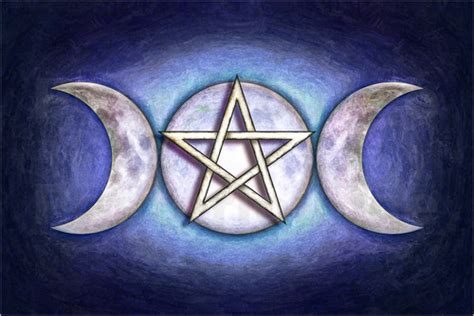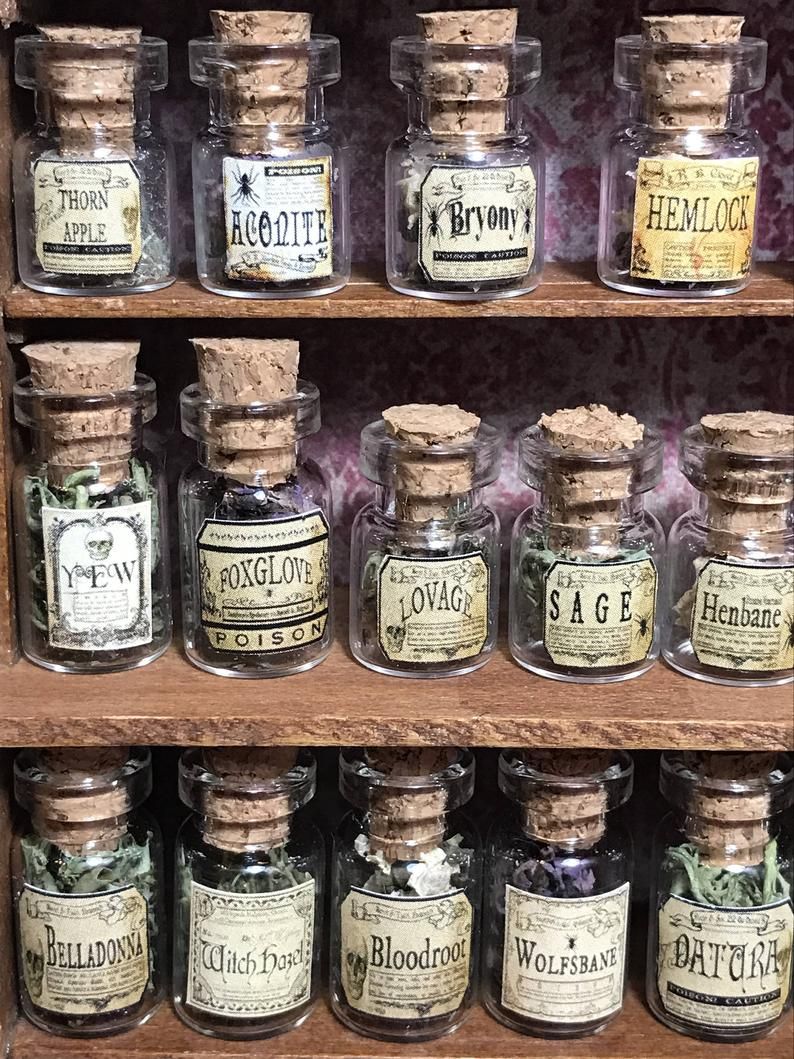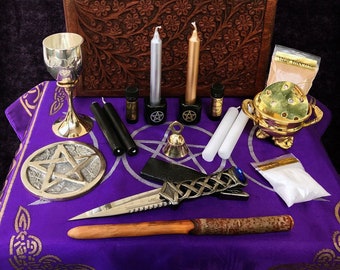
Many have been curious from afar of the ancient art of Witchcraft, yet too apprehensive to actively explore it. For Witchcraft has remained taboo for many for fear of church and family disapproval, if one were to dabble in it. Then there’s the irrational fear one could get sucked into something dark with no escape (Hansel and Gretel story). And therefore it might be well advised to leave Witchcraft alone.
However, while Witchcraft has been long portrayed in literature and cinema as an evil endeavor, this could not be further from the truth of most Witchcraft practiced throughout history.
Even though a minority of practitioners of Witchcraft have delved into the ”black arts” (which we won’t discuss here), a decided majority of practitioners have been accomplished chefs, herbalists, healers, intuitive counselors, diviners of the future, manifestors of good, and fierce protectors of planet Earth and all her inhabitants.
Although there are many types of Witchcraft attributed to various cultures on the planet, this blog post will focus on the Celtic Witchcraft traditions deriving from countries of the old British Isles, Great Britain, Ireland, Scotland, and Wales.
WITCHCRAFT’S FRIGHTFUL HISTORY
The pun is intended here. For Witches (practitioners of Witchcraft) have suffered greatly throughout history at the hands of religious and political zealots. This has basically occurred because Witches were feared by the highly superstitious general public in their communities.
Subsequently, Witches have been blamed, punished, and even killed for such unfortunate events as foul weather, pest infestations, crop devastations, livestock losses, financial losses, unexplained illnesses and deaths, and political reversals. Often a Witch’s keen intuitive ability to glimpse probable future events, while meant to be helpful, was seen as synonymous with causing such events.
Moreover, the pets of Witches, cats in particular, also suffered historical public condemnation, as they were believed to be shape-shifted spirits that served as lieutenants or “familiars” to their Witch masters. Thus, black cats have often been depicted in literature as mascots alongside Witches.
Fortunately, the tides of legal persecutions turned for practicing Witches when humans moved away from the superstitious thinking of previous times to that of the more rational thinking of modern times. But still a definite stigma toward Witches has remained to this day.
WICCA VS WITCHCRAFT
Wicca is considered a modern take on the Paganism religion with doctrine, Priests and Priestesses, and worship of a Pagan God and Goddess. Witchcraft however, is considered a “spiritual science,” a way of living in harmony with the seasons and elements of nature. This is similar to American Indian Shamanism and Chinese Taoism.
The important distinction is, although all Wiccans practice Witchcraft, not all practitioners of Witchcraft identify as Wiccan.
RISE OF MODERN WITCHCRAFT
Modern Witchcraft takes specific traditions out of the context of Wicca as a stand alone collection of rituals. And these rituals are practiced irregardless of one’s religious affiliations. In fact, I’ve learned from my research that many practice Witchcraft without knowing they are. For Witchcraft possesses many similarities with the healing, shamanic, and psychic arts, as well as with the popular practice of manifestation using the Law of Attraction.
Furthermore, Witchcraft is enjoying a renaissance in popularity with a plethora of books, YouTube videos, podcasts, blogs, and websites to peruse. And there’s a sizable push of the topic by social media influencers on Facebook, Instagram, and TickTock.
With the rise of public awareness, the age-old grip of stigma related to Witchcraft is loosening. Thus, there’s a sizable number of new Witches dipping a toe into the practice of modern Witchcraft.
COVEN-BASED VS SOLITARY PRACTICE
Coven-based Witches prefer to practice their Witchcraft in a group of like minded practitioners, referred to as a coven. And most covens meet regularly in a circle to practice and support one another.
Solitary Witches however, do not participate in a coven of other Witches, but rather prefer to practice alone. And solitary Witches are more apt to choose cafeteria style from the plethora of Witchcraft practices in which to follow.
VARIOUS TYPES OF MODERN PRACTICING WITCHES



The Novice Witch – is basically a newbie Witch referred to as a “Baby Witch” who is just starting out exploring various Witchcraft practices. As novices they have likely not yet committed to any specific type of Witchcraft.
The Kitchen Witch – is a Witch who sets up their kitchen as a sacred space and infuses their cooking with intentions they wish to manifest through traditional Witchcraft rituals. They cook with herbs, spices, etc., that together create synergy in affecting a goal rather than just flavor. The Kitchen Witch’s culinary dishes then become like a spell to attract specific outcomes for themselves and others who consume them.
The Hearth (House) Witch – is a Witch who sets up their home as a sacred space. They place candles, crystals, herbal sachets, and objects found in nature around their home making their entire home an altar. The Hearth Witch maintains this sacred ambience with such clearing rituals as candle magic, diffusing of essential oils, and ritual sweeping with a traditional Witch’s broom. And they perform their home maintenance duties in a purposeful and thoughtful manner.
The Green Witch – is a super nature and garden enthusiast Witch. Green Witches cultivate plants, flowers and trees with traditional Celtic and organic planting, growing, and harvesting methods. They then concoct their potions, spells, essential oils, and elixirs from items either grown or foraged from the natural world such as, herbs, plants, flowers, seeds, tree bark, and tree roots.
The Hedge Witch – is a healer Witch. They are quite similar to a Naturapath, or one who creates and prescribes herbal, homeopathic, and folk remedies for healing physical and emotional maladies. The Hedge Witch focuses their magic on prescriptions and rituals for healing, literally embodying the age old term of “Witch Doctor.”
The Crystal Witch – is a Witch who is a crystal (gem and mineral) enthusiast. A Crystal Witch works with crystal grids, and wears crystals for healing purposes to attract desired goals (e.g., love, health, wealth, luck, abundance). They may also use crystals to program specific outcomes in situations. Additionally, crystals are used to correct any imbalances in important components of the personal energy field, such as the Chakras and Aura.
The Cosmic Witch – is an astronomy and astrology enthusiast. A Cosmic Witch tracks the paths of the planets and phases of the Moon and uses rituals to mitigate negative influences of planetary events. They conduct activities of their lives based very much on the phases of the Moon. Additionally, they celebrate the Moon’s monthly phases with rituals steeped in lunar magic.
The Sea Witch – is a Witch who is a sea and sea life totem enthusiast. A Sea Witch combs the beaches for seashells, starfish, sea glass, shark and whale teeth, and sea water to use in their rituals. They track the tides and ocean currents which are influenced by the phases of the Moon.
The Sex Witch – is a Witch focused on creating spells and potions for attracting love, romance, and great sexual experiences.
The Gray Witch – is a Witch who practices both white magic to affect good, and black magic to teach a lesson, or redirect negative energies back to the sender. The practice of black magic with hexes and curses is frowned upon and violates the ethics of most Witches. However, the Gray Witch feels the end (payback) justifies the means.
The Eclectic Witch – is a Witch who chooses cafeteria style from the practices and rituals of the other types of Witches listed above. An Eclectic Witch may be considered a combination of two or more of the above listed Witch types, i.e., a Kitchen/Hearth/Green/Hedge/Crystal Witch. Wait…I think this describes me. Lol.
The Wiccan Witch – is a Witch who is a card carrying member of the Wiccan religion, and worships the Horned God, the Moon Goddess, and perhaps other Pagan deities. A Wiccan Witch most often practices in a coven of other Wiccan Witches. And they likely practice all the rituals of the above Witch types. However, they are apt to also partake in ceremonies steeped in significantly higher and riskier magic, than the everyday magic practiced by the other Witch types.
POPULAR TOOLS OF WITCHCRAFT

There is definitely a coolness factor attached to the below list of tools of ritual Witchcraft, which is certainly not an exhaustive list. These items are commonly kept upon a Witches home altar.
Amulet
Athame (ceremonial knife)
Bell
Book of Shadows (notes on spells, potions & rituals)
Bowl of water
Candles
Broom (for ritual cleaning)
Cauldron
Crystals
Essential oils
Herbs
Incense sticks and burner
Moon symbols
Pendulum
Pentacle symbols (encircled pentagrams)
Rock salt
Sage bundles (for ritual clearing)
Talisman
Tarot Deck
Wand
SPELLCRAFT
Now, spells are probably considered the most woo-woo of Witchcraft practices. However, the purpose of casting spells is to perform a ritual that aids manifesting intended desires and goals of the Witch. And every new-age Law of Attraction practitioner, worth their salt, knows that thinking, speaking, and acting on their intention triples the power to attract their desired goal.
ETHICS OF WITCHCRAFT
In general, most Witches feel it’s unethical for them to violate one’s free will with hexes, curses or even positive spells without the permission of the recipient. Often Witches are asked by someone to secretly cast a spell on someone else in their life to affect a change in a nshared situation. However, this is considered unethical by most modern Witches. After all, this is the very thing that got Witches into trouble with their neighbors during their early history.
WITCHCRAFT’S IMPORTANT FESTIVALS
Due to their strong affinity for the cycles of nature, modern Witchcraft practitioners celebrate the four old Celtic solar festivals on dates that mark the change of the earthly seasons. They also celebrate additional Celtic festivals, most notably Beltane and Samhain.
Spring Equinox – Northern Hemisphere/March 20th – Southern Hemisphere/September 22nd – Celebrates the reawakening of plants, flowers, and trees laid dormant over the winter months.
Beltane – Northern Hemisphere/May 1st – Southern Hemisphere/October 31st – Mid-point between the Spring Equinox and Summer Solstice – Celebrates fertility and the annual mating season for Earth’s creatures.
Summer Solstice – Northern Hemisphere/June 21st – Southern Hemisphere/December 21st – Believed to be the longest day of daylight of the year.
Autumn Equinox – Northern Hemisphere/September 22nd – Southern Hemisphere/March 20th – Celebrates the autumn harvest.
Samhain – Northern Hemisphere/October 31st – Southern Hemisphere/May 1st – Mid-point between the Autumn Equinox and Winter Solstice – this is believed to be the day that the veil between the material world and the spirit world is the thinnest and communication between the inhabitants of both worlds is the most available.
Winter Solstice – Northern Hemisphere/December 21st – Southern Hemisphere/June 21st – Believed to be the shortest day of daylight of the year.
SUMMING UP
Although I’ve haven’t identified as a practitioner of modern Witchcraft, when researching the topic I was amazed to find that many of the practices coincide with my own spiritual practices. As an avid gardener, I cook with herbs and spices and am an herbalist and essential oil enthusiast. I’m also an energy and crystal healer. I read Tarot professionally and practice the Law of Attraction. And I follow the phases of the Moon and I love candles.
The piece de resistance is, as an Acupressurist, I’m a follower of Taoism and Chinese Five Element Theory whose focus is on the seasons and elements of nature, as is the focus of modern Witchcraft.
The practice of modern Witchcraft is surprisingly not so different from the practices of many other spiritual paths. And since one’s spiritual path is a personal choice, the path of modern Witchcraft should be respected as any other.
Leave a Reply